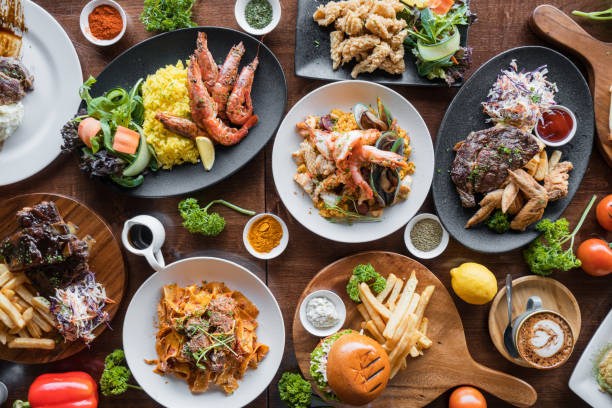In today’s world, managing expenses is a crucial aspect of maintaining financial stability. Among various expenditures, the cost of groceries can significantly impact your budget. However, saving money on food doesn’t have to mean compromising on taste or nutrition. With some strategic planning and mindful choices, it’s possible to slash your food bill by $50 or more while still enjoying delicious and wholesome meals.
- Plan Your Meals and Create a Shopping List: One of the most effective ways to save money on groceries is to plan your meals ahead of time. Sit down and create a weekly meal plan, taking into account ingredients you already have on hand. Base your meals around items that are on sale or in season to maximize savings. Once your meal plan is complete, make a detailed shopping list, ensuring you only purchase what you need.
- Shop Wisely: When it comes to grocery shopping, where you shop matters. Compare prices at different stores and consider shopping at discount supermarkets or bulk food stores for staple items. Additionally, take advantage of coupons, loyalty programs, and discounts to further reduce your expenses. Buying generic or store-brand products instead of name brands can also lead to significant savings without sacrificing quality.
- Embrace Plant-Based Meals: Incorporating more plant-based meals into your diet can be both cost-effective and nutritious. Beans, lentils, chickpeas, and tofu are affordable sources of protein that can serve as the foundation for a variety of satisfying dishes. Vegetables, fruits, and whole grains are also budget-friendly options that provide essential vitamins, minerals, and fiber. Experiment with meatless Mondays or try substituting meat with plant-based alternatives to lower your food bill without sacrificing flavor or nutrition.
- Cook in Bulk and Freeze: Cooking in bulk is a smart strategy for saving both time and money. Prepare large batches of soups, stews, casseroles, or pasta sauces and portion them into individual servings. Store extras in the freezer for convenient meals on busy days. Not only does this help reduce food waste by using ingredients efficiently, but it also eliminates the temptation to order takeout when you’re short on time.
- Minimize Food Waste: Food waste is not only harmful to the environment but also contributes to unnecessary spending. To minimize waste, practice proper food storage techniques, such as storing perishable items in airtight containers and organizing your refrigerator to prevent items from getting lost or forgotten. Get creative with leftovers by incorporating them into new dishes or repurposing them for future meals. Additionally, composting food scraps should be considered to reduce waste further and create nutrient-rich soil for gardening.
- Stick to Simple, Versatile Ingredients: Opting for simple, versatile ingredients can help stretch your food budget further. Staples like rice, pasta, oats, and potatoes are affordable and can be used in countless recipes. Similarly, ingredients like onions, garlic, herbs, and spices can add depth and flavor to dishes without breaking the bank. By focusing on these budget-friendly basics, you can create a variety of delicious meals without overspending.
- DIY Kitchen Staples: Many kitchen staples can be made at home for a fraction of the cost of store-bought versions. Items like bread, granola, salad dressings, and sauces are easy to prepare from scratch and often taste better than their commercial counterparts. Investing a little time in homemade alternatives can lead to significant long-term savings and give you greater control over the quality and ingredients of your food.
- Limit Dining Out and Takeout: While dining out or ordering takeout can be convenient, it’s typically more expensive than cooking meals at home. Limiting these expenses can result in substantial savings over time. Reserve dining out for special occasions and prioritize cooking homemade meals as much as possible. If you do choose to dine out, look for restaurants that offer deals, specials, or happy hour discounts to make the experience more budget-friendly.
Saving money on groceries doesn’t have to mean sacrificing flavor, nutrition, or variety in your meals. By implementing strategic shopping habits, meal planning, and cooking techniques, you can trim $50 or more off your food bill while still enjoying tasty and nutritious dishes. With a little creativity and mindfulness, eating well on a budget is not only achievable but also rewarding for both your wallet and your health.


